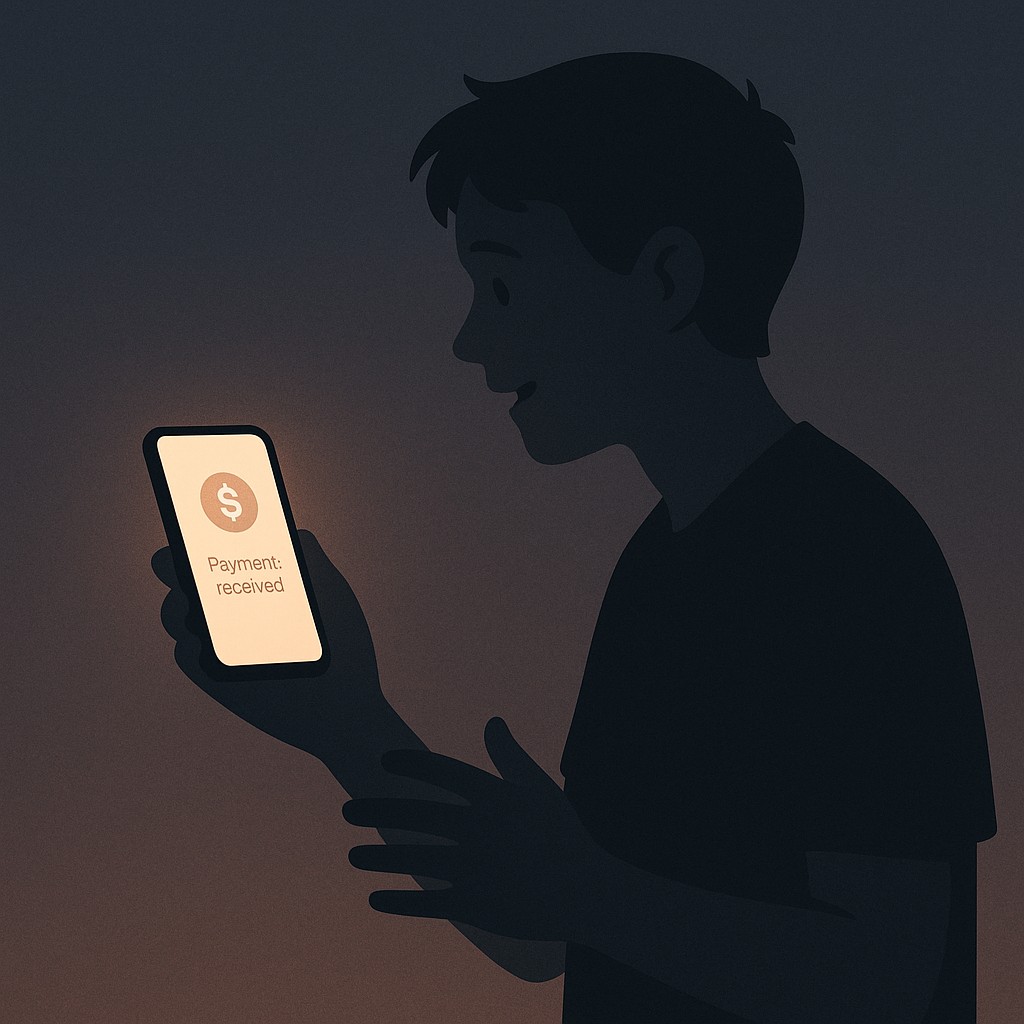Sell to Validate: Why Your First $1 Beats Any Plan
Sell to Validate: Why Your First $1 Beats Any Plan

That First $1 Changed Everything
Late May. I’d spent weeks staring at spreadsheets, sketching app diagrams, running growth models. All the classic stuff you do when you’re a builder—so much energy, but most of it circling in the same lane. Then, after dinner one night, a notification buzzed. That was my first true sell to validate moment—an actual stranger, not my cousin or a friend doing me a favor, had paid $1 for my app. It’s kind of ridiculous in terms of numbers, but the feeling was something else. All my planning and guesswork collapsed into one simple truth: someone out there valued what I made enough to pay, even just a buck. That changed the chemistry. It wasn’t just proof. It was momentum.

Six months ago, I was sure that chasing 10,000 followers or stacking up enough savings to quit my job was the path. Turns out the sale didn’t care about any of that. The only thing that mattered, in the end, was one person deciding my work was worth a dollar. You lose all ability to pretend after that. There’s no way to spin not having sales.
Here’s a loop I got stuck in more times than I care to admit: pulling late nights on validate before scaling, and plotting user growth for apps that hadn’t landed a single paying customer. I see plenty of engineers stuck at exactly the same spot. Eventually you notice that none of it means anything until someone commits actual money.
I didn’t need a roadmap. I needed a result.
So, if you’re building right now—drop the follower counts, ignore the fancy dashboards. Make a real commitment: land paid product validation within two weeks. Doesn’t matter if it’s just $1. Shape your next move to deliver actual, proven value for one buyer. That pivot changes everything. Effort transforms into traction fast, even if it feels almost embarrassingly small at first.
Why Sell to Validate Cuts Through the Fog
Trying to close a sale forces all your vague ideas—features, messages, pricing—into collision with real-world questions. Suddenly, the “maybe I’d pay” soft talk disappears, replaced by people poking at timelines, integrations, and what’s actually in the deal. There’s nowhere to hide behind hypotheticals. You get to confront what really matters to your buyer, whether you’re ready or not.
Here’s how it hit me: when I started pitching my consulting service, I figured I’d mapped out every detail. Months putting together deck slides, practicing my value prop, stress-testing imaginary objections. The first real client call toppled that stack in about three minutes. Nobody cared about 80% of my pitch—they zoned in on the fact that I hadn’t migrated a team off their legacy stack before. Suddenly, my shiny workflow looked thin. They wanted concrete outcomes, risk reduction, and exact proof of what was included (and not).
Details I’d kept fuzzy fell apart. I walked away a bit rattled, but honestly, less confused. And I’m still not sure how everyone else seems so polished when the reality is this rocky. I keep hearing stories from other founders—same embarrassment, same crash into real customer needs.
That fit: trading “How do I make this perfect?” for “How do I make this valuable?” It’s a daily choice, a muscle you build that shoves you past theory into what creates action.
Progress doesn’t come from polish. It comes from proof.
The easiest way to find out if someone will actually buy is to validate with sales, even before the product is done. Likes and signups are just noise. Willingness to pay is binary. That $1, as silly as it looks in your Stripe dashboard, is enough—you’re suddenly playing in reality.
$1 Sales: Why They Matter More Than You Think
It sounds trivial to sell to validate, tossing around “just a buck,” especially when you’re staring at spreadsheets, plotting big launches, dreaming in growth curves. But when a stranger sends you a dollar, it’s more than pocket change. It’s trust in action—your work solved a problem for someone living on the other end of your code. That tiny exchange clears away uncertainty in a way hundreds of optimistic projections never could. You stop guessing who might care. Now you know someone did, and all the generic edge cases fade.
If you’re hesitating because rejection feels personal, here’s my hard-earned advice: every “no” is a scope change, not a verdict on you. The first time I pitched my app, I half expected a laugh, maybe even a little ridicule. Reality check: most people are just evaluating usefulness. Their “no” isn’t drama—it’s a pointer, telling you what doesn’t fit them right now.
That two-week sprint isn’t about making yourself sweat for fun. Cutting the timeline slices away the fluff and narrows your focus to the absolute essentials for making a sale. Suddenly, things you thought were “urgent” start to fall away. What’s left is sharp, and you know exactly where your energy belongs.
Afraid to sell before you build? I was. Actually, I used to prefer tinkering with features, dashboards, and cool UI—forgetting to avoid overengineering—until a prospect appeared. But the moment you force paid commitment up front, you discover that most supposed “must-haves” are stealth distractions. Selling makes it obvious what real customers want, and you skip the polish for polish’s sake. Pilots and demos for non-payers? They usually fizzle (source). I learned that the hard way, rebuilding dashboards for projects nobody really needed—my code repo’s graveyard still has some zombie branches I’m too lazy to delete. A messy loop, but the lessons stick: build sharp for buyers, not for the imaginary crowd.
Getting paid, even a dollar, yanks you out of the fog and drops you straight into the feedback loop. That’s all the “traction” you really need.
Two Weeks, One Dollar: A Sprint Toward Proof
Here’s your actual challenge: over the next 14 days, get one person to pay for a solution. No “pick your brain” coffees, no “waitlist” signups. Literal payment, even if it’s a buck. The goal here is momentum measured by proof, not glam.
First step: lock onto a specific buyer and a really clear problem—no vague “busy people,” no “AI for everything.” Try to picture when this pain crops up for them. A real bug you fixed for a friend? A forum complaint you saw last week? Make it tight, nameable, and frequent.
Reduce your offer to one written page. One sheet—problem, promise, timeline, price. Forget branding for now. When I first shipped my app, I wasted days dressing up onboarding sequences nobody even saw. The early offer just needs to be readable, clear, and direct—enough to get a simple yes or no.
Need crisp copy fast for offers, landing pages, and outreach—use our AI to generate clear content in minutes, so you can ask for the sale sooner and focus on delivering value.
For outreach, skip blasting the world cold. Find three actual prospects who fit the buyer profile. Maybe a LinkedIn contact, someone you met at a meetup, or someone who griped online recently. Reach out personally, not as a faceless campaign. “Saw your post about X—I built something that fixes it, want to try?” Simple. Warm, if possible.
Then, the hard part: get on a call or run a demo. Explicitly ask for payment, even if it’s $1–$20. Why? Because when people haven’t felt the pain, they won’t start caring—or paying (source). That moment is sharp. No more hiding behind “pilot feedback” or pretending an invoice will clean it up later. Take payment. Then validate MVP with sales by delivering your fastest, smallest viable win within days. Growth plans and workflows? They crumble under the pressure of testing with real money. You’ll figure out, instantly, whether this is a pain worth solving—or drop it and hunt again. There’s no purgatory here, just clarity.
Not going to lie—two weeks feels rushed when you’ve spent months prepping and waiting. But that $1 sprint slices through the fog much faster than any launch checklist.
One Paid Sale, Then What?
The moment that first buck lands, the context flips. I grab the buyer’s actual words—the pain they voiced, the hook that made them click “buy”—and stash them somewhere sticky. Could be a note app, sometimes just a scrap of paper. When you match the result (not “they liked it,” but “cut two hours of hassle,” or “fixed the sync problem”) to the real feedback, your next steps get obvious.
Make your roadmap visible in receipts, not in your imagination. Add features only to cut friction for the payers, not just to look smart in demos. Every priority should ease the transaction for your next buyer. Anything else can wait—or die off.
This loop is dead simple, even though I spent far too long missing it. Sell, deliver, learn, repeat. Go back to those weeks lost chasing “launch readiness” for hypothetical growth. Paid feedback is a bulldozer. It makes the cycle fast, and it’s brutally clear.
So here’s what’s left: ship something now, ask one real person for a dollar, and let paid proof replace all those late-night theory spirals. That’s how you build something that exists, not just something you hope will.
Some people still chase polish over proof. I guess that tension never fully disappears—my code repo still pulls me in sometimes. But the progress you need is hiding behind the first sale, not the perfect setup.
That’s how you build with reality in mind, not just the dream.
Enjoyed this post? For more insights on engineering leadership, mindful productivity, and navigating the modern workday, follow me on LinkedIn to stay inspired and join the conversation.
You can also view and comment on the original post here .
